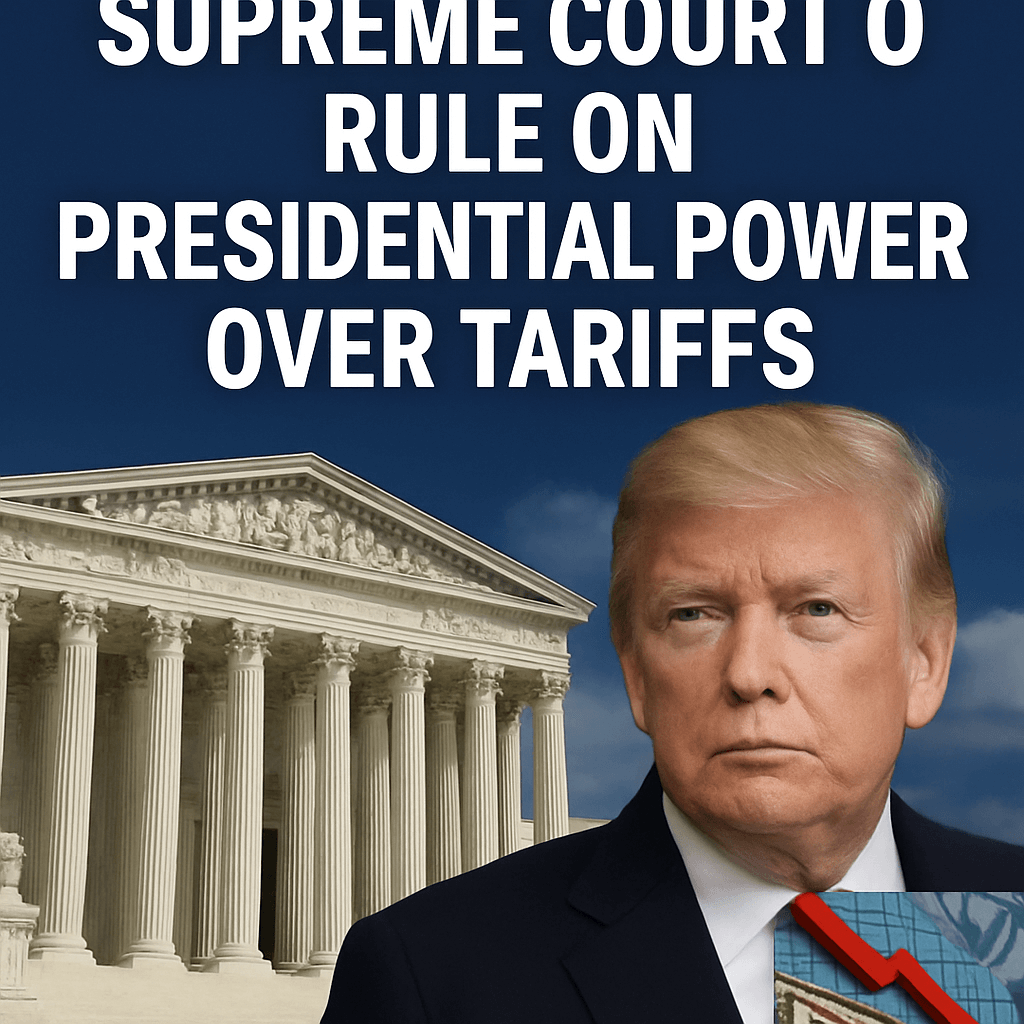Supreme Court to Rule on Presidential Power Over Tariffs

The Trump administration is preparing for a critical Supreme Court battle that could redefine the limits of presidential power concerning tariffs, a responsibility historically vested in Congress by the U.S. Constitution. This legal confrontation arises following the invalidation of several tariffs by a federal trade court, which argued that President Trump’s actions encroached upon congressional authority.
The Context of Tariff Authority
Tariffs are taxes imposed on imported goods, serving as a tool for economic policy. They are intended to protect domestic industries from foreign competition but can also trigger retaliatory measures from other nations, impacting international relationships. The authority to impose tariffs was originally granted to Congress under Article I, Section 8 of the Constitution, which states that Congress has the power to levy taxes, duties, and imposts.
The Recent Court Decision
Recent developments saw the New York-based Court of International Trade strike down numerous tariffs imposed by the Trump administration, most notably those affecting imports from Mexico and China. These tariffs were justified under the International Emergency Economic Powers Act (IEEPA), which allows the president to regulate economic transactions in response to national emergencies.
Legal experts have indicated that the administration’s reliance on IEEPA was likely aimed at expediency. However, the Court of International Trade found that the breadth of the tariffs infringed upon Congress’s constitutional powers, dramatizing the legal contention between the executive branch and legislative authority.
Implications for Presidential Power
The appeal to the Supreme Court is anticipated to lead to a pivotal consensus on the boundaries of executive power. Past presidents have increasingly utilized broad interpretations of trade law to expand their authority. According to Lee Smith, an attorney specializing in international trade, “It’s a constitutional question that has enormous implications for the separation of powers.”
A Historical Perspective on Trade Law
The Supreme Court historically refrains from ruling on trade issues. Its last significant involvement was in 2009 with the case U.S. v. Eurodif S.A., which focused on anti-dumping duties related to low enriched uranium imports. In the context of the current case, the Court must consider how broadly the president’s power can be interpreted in light of several past rulings that have already shifted the balance between federal executive and legislative power.
Recent Precedents and Their Impact
Two recent Supreme Court decisions, West Virginia v. Environmental Protection Agency and Loper Bright Enterprises v. Raimondo, signal a shift towards increased scrutiny of executive authority. Both cases have implications for how vague statutes may be interpreted, reinforcing the notion that a president must substantiate claims made under ambiguous legal frameworks. This could complicate the Trump administration’s arguments surrounding the necessity of tariffs when framed under terms such as “national security” or “economic retaliation.”
Potential Outcomes and Considerations
Legal scholars like Stavros Gadinis from U.C. Berkeley emphasize that while past procedural diligence provided a protective framework for trade policies during Trump’s first term, this latest round of tariffs lacked similar rigor. “We are witnessing a broader application of tariffs without the backing of established procedures, which may lead to greater scrutiny in court,” Gadinis remarked.
The prospect of losing at the Supreme Court remains uncertain, but the administration’s relative lack of procedure-observing could tip the scale toward potential reevaluation of these tariffs. If the Supreme Court aligns with the trade court’s findings, it could enforce more stringent checks on future executive actions tied to trade policy.
Conclusion and Future Outlook
The looming Supreme Court case is more than just about tariffs; it questions the boundaries of presidential authority that could echo throughout the future of U.S. governance. As both sides prepare their arguments, the outcome may very well shape not only how tariffs are imposed but also establish a precedent that manages the balance of powers between Congress and the presidency for decades to come.
Expert Opinion: “This case exemplifies the ongoing tug-of-war between regulatory authority and elected representatives—a central tenet of democracy,” said Smith.
Source: fortune